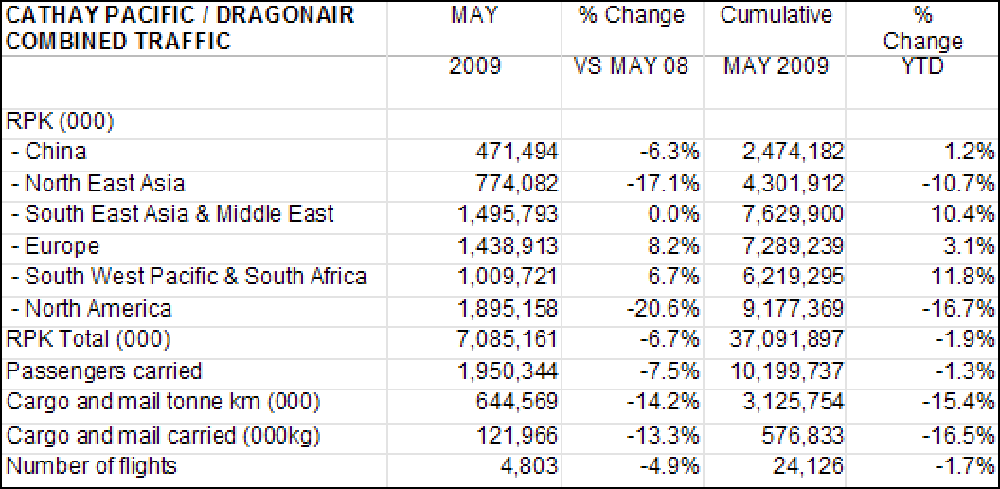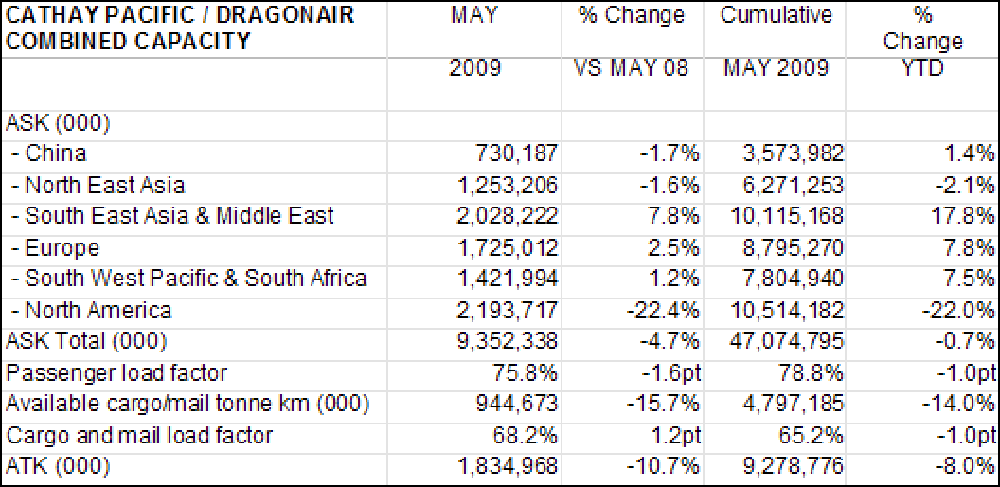Copyright © 2024 Swire Pacific Limited. All rights reserved.
Cookies and Privacy: We use cookies to enhance your user experience on our website. Please indicate your cookie preference. For more information, please read our Cookie Policy and Privacy Notice.
Cathay Pacific Airways today released combined Cathay Pacific and Dragonair traffic figures for May 2009 that show a significant fall in passenger numbers compared to the same month last year and another marked drop in the amount of cargo and mail carried.
In May, the two airlines between them carried a total of 1,950,344 passengers - a drop of 7.5% compared to the same month in 2008 - while the load factor dropped by 1.6 percentage points to 75.8%. Capacity for the month, measured in available seat kilometres (ASKs), fell by 4.7%. For the year to date, the number of passengers carried is down 1.3% against a capacity decline of 0.7%
The two airlines carried a total of 121,966 tonnes of cargo and mail last month, down 13.3% on May 2008, while the cargo and mail load factor rose by 1.2 percentage points to 68.2%. Capacity for the month, measured in available cargo/mail tonne kilometres, fell by 15.7%. For the year to date, tonnage has fallen by 16.5% compared to a capacity drop of 14.0%
Cathay Pacific General Manager Revenue Management Tom Owen said: "May is traditionally one of the weaker months for our passenger business, but this year demand was dampened further by a combination of factors. The global economic downturn continued to impact on our business, with lower numbers in the Economy cabins, while the big slump in premium traffic continued unabated. We also saw the Influenza A (H1N1) outbreak lead to a sharp falloff in traffic to and from Japan, with passengers in Hong Kong and other key markets showing an increased reluctance to travel. We pared back our capacity in May to better balance supply and demand."
Cathay Pacific General Manager Cargo Sales & Marketing Titus Diu said: "The story in May was very much in line with the first four months of 2009, with an overall weakness in the global airfreight business and continued soft demand out of Hong Kong and Mainland China. We introduced further capacity reductions in May in response to the sustained downturn. In terms of volumes, there are signs that the bottom of the slump has been reached, though visibility remains poor and there is no indication of any significant upswing in demand arriving soon."

